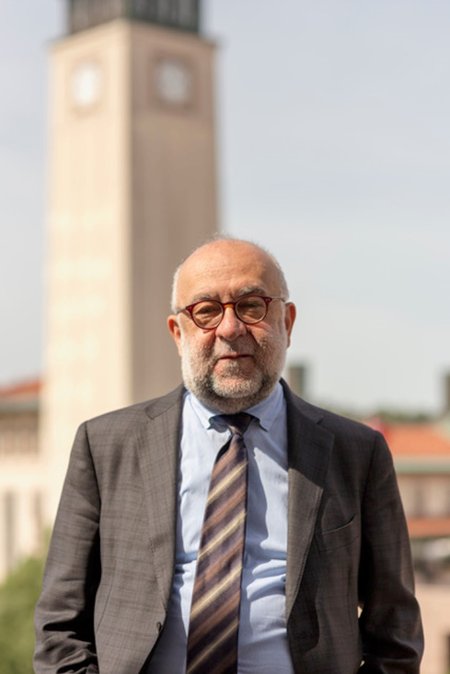Ahmet İçduygu is a full professor at Koç University in Istanbul, Turkey, with appointments in both the Department of International Relations and the Department of Sociology. He is also the Dean of the College of Social Sciences and Humanities at Koç University and the Director of the Migration Research Center (MiReKoc). We sat with him to reflect about the migration dynamics that the earthquakes in Turkey has brought.

Could you tell us a bit of what happened and the current situation?
Early in the morning of February 6, 2023, two earthquakes hit south-eastern Turkey, making it the worst national disaster in a century, what made this devastating disaster even most catastrophic was the fact that the authorities in Turkey had great difficulties in reacting in the early hours of the earthquakes. After overcoming the paralyzing impact of the catastrophic picture, with the efforts and solidarity at national and international community level, a remarkable rescue operation started. Currently, almost a month after the earthquake what we know is the following: some 214,000 buildings containing 608,000 apartments either collapsed or suffered heavy damage, more than 45,000 people have died and over 150,000 are wounded.
Can we expect earthquakes to be a new driver of migration waves, internal and external, based on physical catastrophes?
The earthquakes in Turkey have affected millions of people, caused major internal displacement and left many families living in tents or prefabricated buildings in affected areas. Nearly 13.5 million Turkish citizens and nearly 1.7 million Syrian refugees living in the region have been directly affected by the devastating earthquakes. The country faces a significant challenge in providing shelter for millions of people left homeless in the middle of winter. Many earthquake survivors initially migrated from cities to their homes in villages, while the displacement dynamics have led to population loss in heavily damaged cities and increases in neighbouring and other big cities. This has resulted in emerging risks for welfare services, rising rental rates, and controversy over suitable shelter options for the survivors.
What is happening with the refugee camps there, how do earthquakes affect and impact the current refugee process?
There is no doubt that not just Turkish citizens were displaced out of the earthquake zone. Out of the over 3.5 million Syrian refugees currently residing in Turkey, nearly 1.7 million are also in the 10 provinces hit by the earthquakes, it is reported that more than 40,000 Syrian refugees had returned home in the three weeks following the earthquakes.
Unfortunately, we do not have an exact number of Syrian refugees impacted by the earthquakes, though officially it is stated that nearly 5,000 Syrian refugees lost their lives, reflecting more than 10 percent of the dead toll in the earthquakes. Syrian refugees in the country are under the temporary protection, which confines them to the provinces where they are registered residents. Before the earthquakes, they could not travel to other provinces without authorisation. The day after the earthquakes, Turkish authorities issued a directive allowing refugees in the 10 provinces to travel to other cities or provinces, except Istanbul, for up to 90 days if they could secure their own accommodation. It is almost certain that Syrian refugees have been affected disproportionately. While Turkish survivors can try to rebuild their lives and look for jobs elsewhere, Syrians have limited chances to do so.
What do you think, are the consequences of earthquakes for Turkish academia and Turkish migration studies?
The recent earthquakes that struck Turkey demonstrate how disasters affect the movement of people in many ways, in this case, it led to the forced displacement of millions, and the post-earthquake period may create slow-onset conditions that give individuals, households, and communities more time to make voluntary migration decisions. After a recovery period, it is likely that return migration will be high on the agenda of those affected. The recovery process will depend on the government's reconstruction programs, economic, social, and political strategies, as well as their financial standards and criteria. This catastrophe has destroyed individual and household assets in seconds and increased vulnerability to poverty. In this context, migratory decisions appear to be a coping strategy for individuals, households, and communities to deal with disaster impacts, which is important for disaster managers and policymakers to consider in designing post-disaster coping strategies.
While earthquake survivors get geographically mobilized, enhancing their resilience is considered key to post-disaster management. Existing hardship was exacerbated by disaster. The importance of fostering resilient individuals and communities is highlighted by lessons learned from past post-disaster experiences. Resilient individuals and communities cope better with and recover faster from crises, but they require sufficient resources to carry out their roles in the recovery period.
You can find out more about Ahmet İçduygu’s research at https://www.ahmet-icduygu.com/
